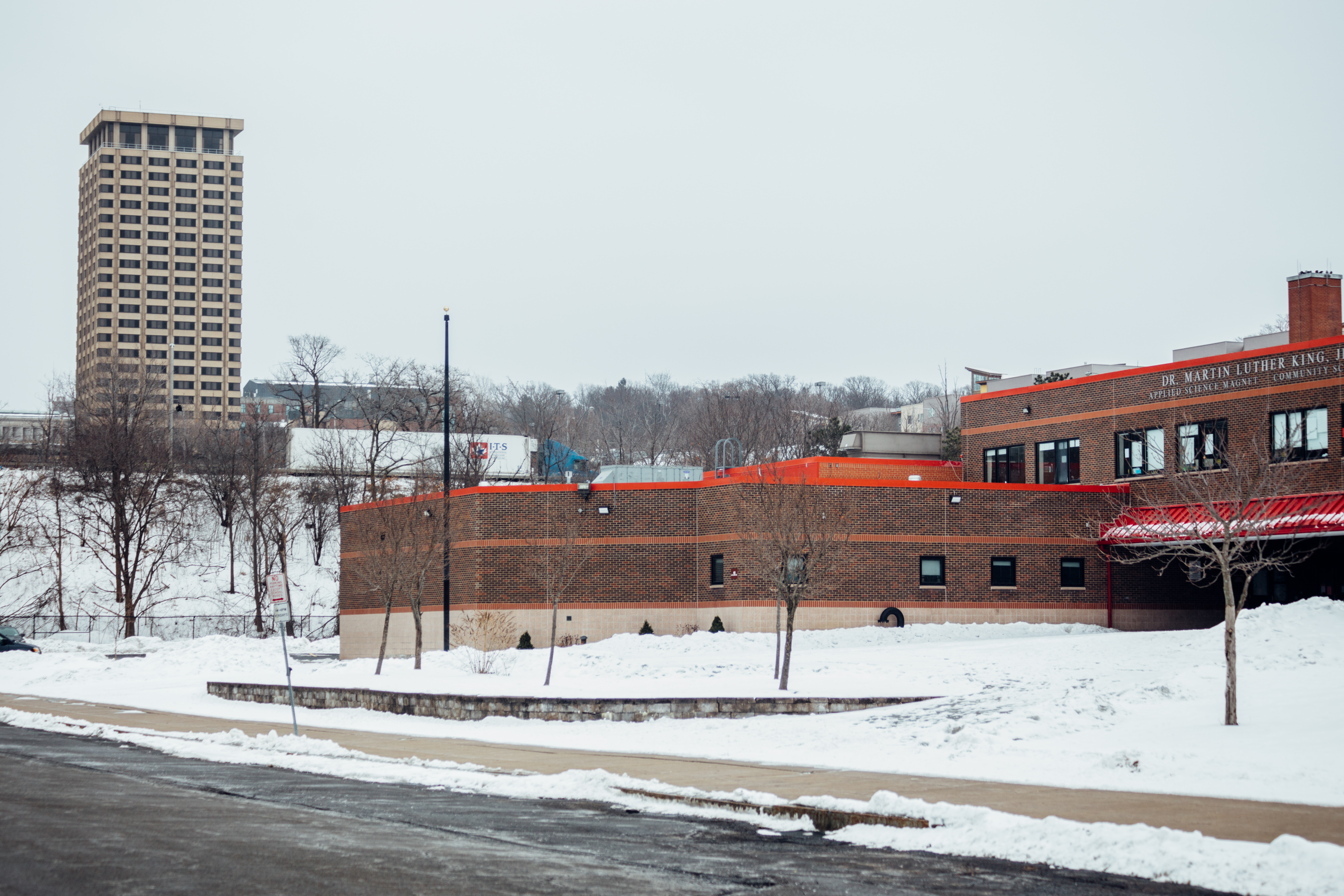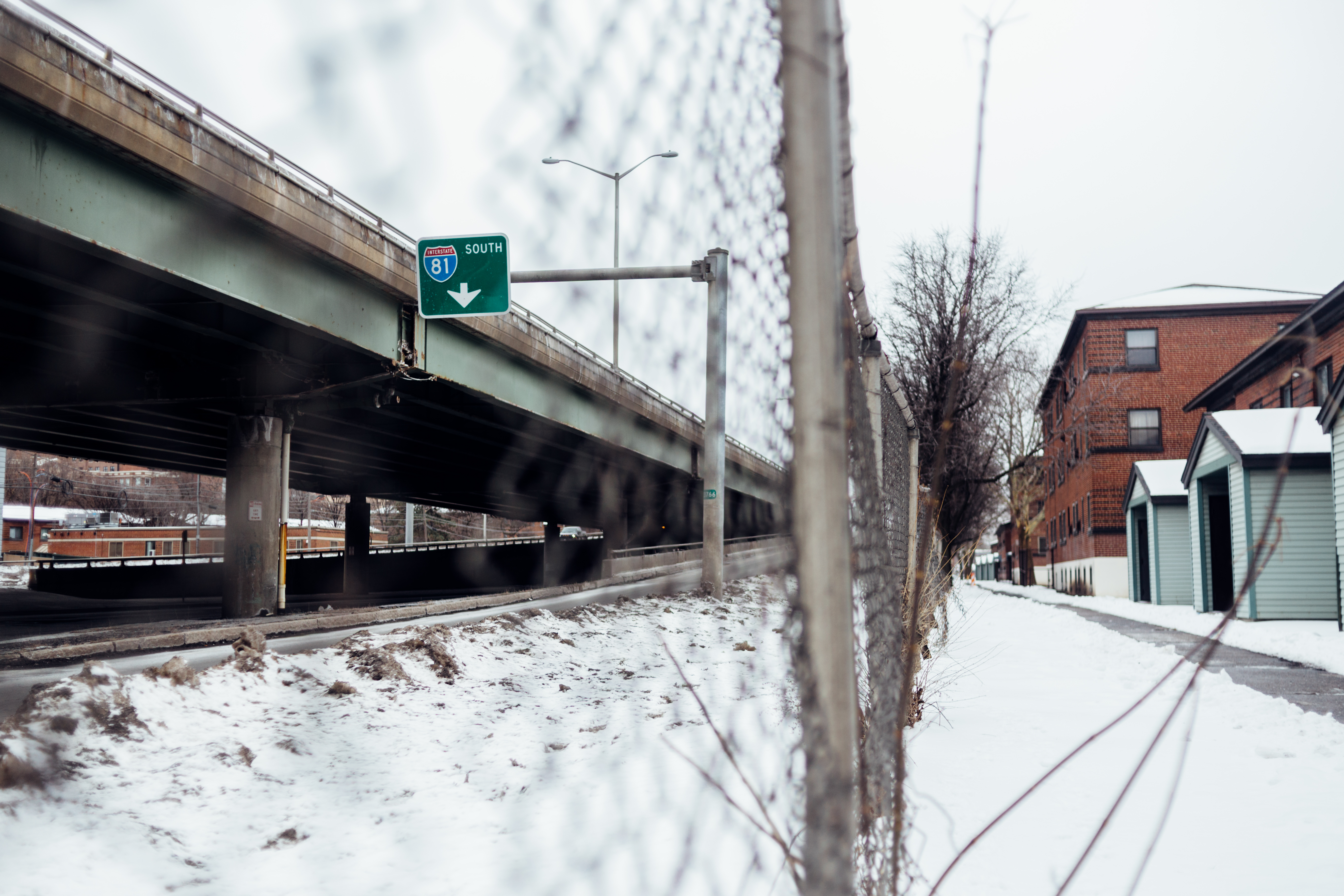Pro-Palestinian Campus Protests Shouldn’t be Snuffed Out by Police
Civil Liberties Union

The health and safety of 500 students who attend Dr. King Elementary School in Syracuse are at risk from a massive infrastructure project set to break ground in their school’s backyard.
About 80 percent of the children at Dr. King are Black and approximately 90 percent live below the poverty line.
The New York highway project will replace the Interstate 81 viaduct, a now-crumbling highway that cuts through the heart of Syracuse. It is estimated to take at least six to 10 years to complete and will cost more than a billion taxpayer dollars.
The details of what exactly will replace I-81 are not yet finalized, but one thing is for sure. The construction will profoundly impact the lives and safety of students, staff, and parents at Dr. King Elementary School. The state Department of Transportation is responsible for coordinating with other agencies to make sure people aren’t put in danger by big construction projects. But it has thus far shirked this responsibility.
The proposed plan calls for constructing an on and off ramp just a stone’s throw away from the parking lot of the school. The demolition of the old highway will likely contain dangerous chemicals, including lead and arsenic. Yet, there is no plan to protect the children from hazardous air pollution during this lengthy construction.
The construction and the new ramp will also create traffic safety issues for students traveling back and forth, especially walkers trying to get to and from school. The current policy of the Syracuse City School District is students must walk to school if they live 1.5 miles or less from their school. This policy combined with DOT’s lack of a transportation plan could cause a real risk to children’s physical health and safety.

How will students be able to safely cross streets to get to class? Will school busses and bus schedules be impacted? Will some students or maybe even all students be forced to go to a different school while construction takes place? What steps will be taken to mitigate any health impacts from the construction?
Hundreds of parents and other concerned community members asked these and other questions at a public meeting with state Department of Transportation officials several weeks ago. The response from DOT was reportedly, “it’s not our problem.”
In order to avoid the mistakes of the past, state officials cannot ignore the voices of the people who will be most impacted by what happens to I-81.
Most questioners were told that DOT wasn’t responsible for dealing with transportation issues. The DOT also tried to shift much of the responsibility to the Syracuse City School District, but the law requires the department to facilitate interagency collaboration when undertaking projects like the I-81 revamp.
The parents also report to us that the department has not kept them informed about possible issues from years of construction near the school and refused to host another public forum.
This lack of community involvement and disinterest in stakeholder input brings back ugly memories of the original I-81 project. When city officials and state engineers originally planned I-81 in the 1960s, they did so without much input from the community. The construction disrupted a predominantly Black working class part of the city and displaced nearly 1,300 Black households. Whites fled because of the construction and that deepened segregation. People who couldn’t leave had to search for scant job opportunities.
After its completion in 1969, there was immediate public backlash because of what the project did to the community. Residents realized I-81 was an economic, social, and design failure that left a mostly Black neighborhood decimated.
Now, 50 years later, we must not let the mistakes of the past repeat themselves. Past practices and government backed policies have contributed and perpetuated segregation in schools across the nation, bringing Syracuse to claim the number one most segregated school district border in New York State and top 10 in the entire nation.
With the redesign of I-81, New York has a chance to create the conditions that are necessary to produce a diverse community with integrated schools. Smart urban planning, community input and equity for all residents must be central to any decision surrounding the I-81 project.
When it comes to how those decisions will impact Dr. King Elementary, the DOT must listen to the concerns of the school community and address the fears of the hundreds of parents by including them in the pending Draft Environmental Impact Statement (DEIS) due to be released next month. The DEIS must also take into account how the new infrastructure will mitigate segregation in schools and foster equal access to education.
In order to avoid the mistakes of the past, state officials cannot ignore the voices of the people who will be most impacted by what happens to I-81.